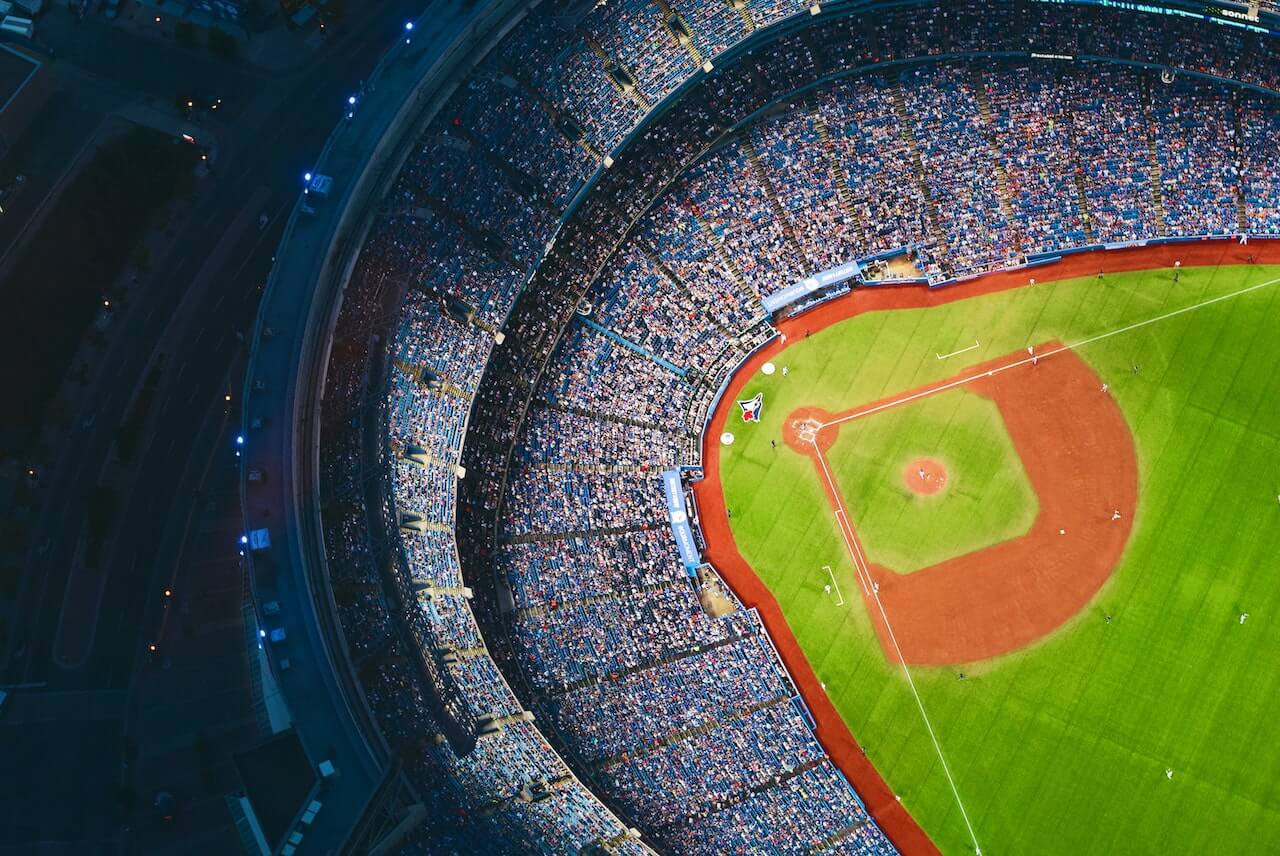A baseball field is a familiar sight to many people, whether they are fans of the sport or not. It is a place where athletes come together to compete, and where fans gather to cheer them on. But have you ever stopped to wonder how many acres a baseball field actually is?
Well, the answer is not as straightforward as you might think. While there are official regulations set by the Major League Baseball (MLB) regarding the dimensions of a baseball field, the size can vary depending on the level of play and the specific field in question.
For example, a regulation MLB field must be between 325 and 400 feet in distance from home plate to the outfield fence, and the infield must be a square with sides of 90 feet. This translates to roughly 2.5 acres of land. However, high school and college fields can be smaller, and Little League fields even more so.
History of Baseball Fields
Baseball is one of the most popular sports in the United States, and a crucial part of the game is the field. Baseball fields have gone through many changes over the years, and this section will explore the history of baseball fields.
Early Baseball Fields
The earliest baseball fields were simple and often irregularly shaped. The first recorded baseball game was played in 1846 in Hoboken, New Jersey, on a field that was 400 feet long and 300 feet wide. The field was laid out in a diamond shape, with bases placed 90 feet apart. However, the field was not perfectly symmetrical, and the distance from home plate to first base was actually closer to 42.5 feet.
As baseball became more popular, fields began to be designed with more care. In the late 1800s, baseball fields were typically around 400 feet to center field, with shorter distances to the foul lines. The pitcher’s mound was also introduced during this time, and it was typically located 50 feet from home plate.
Modern Baseball Fields
Today, baseball fields are highly regulated and must meet specific standards set by Major League Baseball. The field must be a minimum of 325 feet to the foul poles and 400 feet to center field. The infield must be made of dirt, and the pitcher’s mound must be 10 inches higher than the rest of the field. The distance from the pitcher’s mound to home plate is 60 feet, 6 inches, and the bases are placed 90 feet apart.
Modern baseball fields also include features like dugouts, bullpens, and warning tracks. The dugouts are located on either side of the field and provide shelter for the players. The bullpens are areas where pitchers can warm up before entering the game. The warning track is a strip of dirt or gravel located just outside the outfield fence that alerts outfielders that they are approaching the wall.
In conclusion, baseball fields have come a long way since the first recorded game in 1846. From irregularly shaped fields to highly regulated and standardized fields, baseball fields have evolved to meet the needs of the game and its players.
Regulations on Baseball Fields
Baseball fields have strict regulations to ensure that they meet the necessary standards for safety and playability. These regulations vary depending on the level of play, with youth and professional baseball fields having different requirements.
Youth Baseball Fields
For youth baseball fields, the size of the field is typically smaller than professional fields. The infield is usually around 60 feet by 60 feet, while the outfield can range from 180 to 225 feet. The pitcher’s mound is also closer to home plate, usually around 46 feet away. This is to accommodate the smaller size and skill level of younger players.
Additionally, youth baseball fields may have specific regulations regarding the type of equipment used, such as softer baseballs and shorter bats. This is to ensure the safety of the players and prevent injuries.
Professional Baseball Fields
Professional baseball fields have strict regulations set by Major League Baseball (MLB) to ensure consistency and fairness across all teams. The size of the field is much larger than youth fields, with the infield measuring 90 feet by 90 feet and the outfield ranging from 325 to 400 feet. The pitcher’s mound is 60 feet, 6 inches away from home plate.
MLB also has regulations for the height and distance of the outfield walls, the size and shape of the dugouts, and the placement of foul poles. These regulations are designed to create a level playing field and prevent any team from gaining an unfair advantage.
Overall, the regulations for baseball fields are designed to ensure the safety of the players and create a fair and consistent playing environment. Whether it’s a youth or professional field, these regulations must be followed to ensure that the game is played to the highest standards.
Size of Baseball Fields
Baseball is a popular sport played by people of all ages and skill levels. One of the most important aspects of the game is the size of the field. The size of a baseball field can vary depending on the level of play, with youth fields being smaller than professional fields.
Youth Baseball Field Size
For youth baseball, the size of the field is generally smaller than that of a professional field. The infield is typically 60 feet by 60 feet, while the outfield can range from 160 feet to 275 feet. The distance from home plate to the pitcher’s mound is usually around 46 feet. These smaller dimensions allow younger players to develop their skills and make the game more enjoyable for them.
Professional Baseball Field Size
Professional baseball fields are much larger than youth fields. The infield is 90 feet by 90 feet, while the outfield can be up to 400 feet from home plate. The distance from home plate to the pitcher’s mound is 60 feet, 6 inches. These larger dimensions make the game more challenging for professional players and allow for more exciting plays to take place.
Overall, the size of a baseball field can vary depending on the level of play. Youth fields are typically smaller than professional fields, with smaller dimensions that are better suited for younger players. Professional fields are much larger, with larger dimensions that make the game more challenging and exciting for professional players.
Conclusion
After careful research and analysis, it can be concluded that the size of a baseball field can vary depending on the level of play. Professional baseball fields have a minimum size requirement of 2.5 acres, while Little League fields are much smaller, ranging from 0.25 to 0.33 acres. College baseball fields fall somewhere in between, with an average size of 1.5 acres.
It is important to note that the size of a baseball field is not the only factor that determines the quality of play. Other factors such as the condition of the field, the lighting, and the weather can all have an impact on the game. Additionally, the skill level of the players and the strategies employed by the coaches can also affect the outcome of the game.
Overall, the size of a baseball field is an important consideration for players, coaches, and fans alike. While the exact size may vary, it is clear that the dimensions of the field are carefully designed to ensure a fair and competitive game for all involved.







